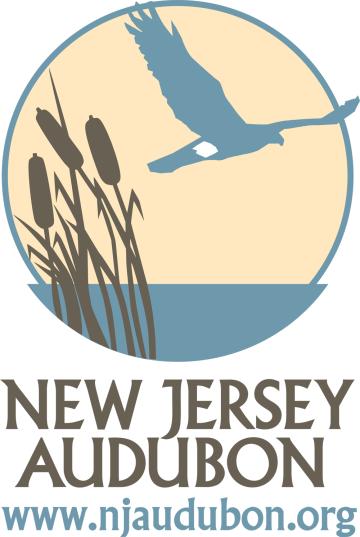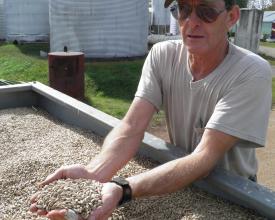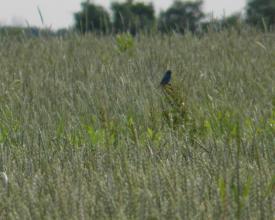
Spelt as Surrogate Habitat for Grassland-Dependent Wildlife Species

The project addresses the dilemma of finding an economically viable grain crop that would not sacrifice food production for wildlife/biodiversity benefits. With the use of the non-GMO grain crop, spelt (Triticum aestivum subsp. Spelta), an alternative vegetation type on land can aid and maximize habitat value for rare grassland species and increase biodiversity on the landscape while also providing the producer with an economical food crop. The project results indicate that biodiversity increased and from an agricultural standpoint spelt was a more economical crop than hay.
Context
Challenges addressed
The project addresses the age old dilemma of trying to find an economically viable crop that would not sacrifice food production land for wildlife/biodiversity benefits. With the loss of large fields of agricultural grasslands to corn and soybean and the lack of interest to set up new ones, wildlife dependent upon grassland habitat inevitably are impacted. Because of landscape changes, many species, including pollinators, are increasingly dependent on the agricultural community for habitat creation, maintenance, and health.
Location
Process
Summary of the process
Spelt has reemerged as a viable product and major cash crop, especially for organic and artisanal small grain growers in the health food market, both in the USA and Europe. It is reported to be much easier to digest than wheat and its nutrients are more “bioavailable,” that is, more readily accessed during digestion. Spelt is much lower in gluten and shows much higher water solubility than other grains, such as wheat. Therefore, individuals with wheat intolerance and gluten intolerance can eat spelt products with no adverse effects. Thus if there is demand, farmers will grow it. The project itself is easily transferable to other producers in North America. This is particularly apparent when you realize that all planting, spraying, and harvesting of spelt can be done with conventional farm equipment and markets for the product are either available now or on the rise. However, as easily transferable it is in concept and equipment to plant, establish and harvest spelt, the placement of the field on the landscape is critical, if the objective is to attract grassland dependent bird species. Planting spelt adjacent to other crops or forested areas should be considered.
Building Blocks
Familiarizing farmers with spelt as bird-friendly and economically viable crop
More farmers need to know about Spelt and its usefulness in food production. Through outreach and demonstartion it can be a viable option for other agricultural producers to adopt into their rotations, which will diversify their farm income.
Enabling factors
Production cost/income of spelt, when compared to the production cost/income of wheat and soy was found to be a much better option for producers to diversify their crops, because of spelt's use in the current consumer market. Spelt has a current market established as both an animal feed and grain for human consumption.
Lesson learned
Unlike hay or grass biofuels, spelt is planted with conventional farm equipment so costs pertaining to obtaining specialized planting or harvesting equipment (like that for warm seasongrass) are not applicable. Therefore farmers were more apt to try it.
Make consumers re-discover spelt as gluten-free and healthy food - as well as bird-friendly habitat
Consumers have discovered the health benefits of ancient varieties and the rising popularity of gluten-free products has increased usage of non-gluten containing specialty grains, such as spelt. A 2004 report published by the Australian Department of Industry & Investment found that: “In animal feed the hull fiber of spelt is particularly beneficial for ruminants, such as cattle, as it increases the digestibility of the feed and reduces acidosis problems." Incorporation of spelt into a crop rotation and using it to attract declining bird species, can be a useful method for farms to attract additional clientele via wildlife watching (eco-agitourism). Through this value-added aspect , the public can become better educated on the importance of supporting local farming, as well as understanding the connection between agriculture, biodiversity, wildlife habitat, wildlife to our natural systems and food supply.
Enabling factors
In recent years, spelt has reemerged as a viable product and a major cash crop, especially for organic and artisanal small grain growers in the health food market, both in the USA and in Europe. It is reported to be much easier to digest than wheat and its nutrients are more “bioavailable,” that is, more readily accessed during digestion.
Lesson learned
Spelt, a non GMO crop, is similar in physical structure and growing-season to the typical native grasses that are used for hay and thus can conceivably accommodate the needs of breeding upland grassland-dependent birds and other wildlife. Harvesting after this date will not impact the breeding bird months, unlike the harvesting of cool-season grass hay crops or other grain crops such as rye, oats, barley or wheat. By incorporating spelt into a farmer’s rotation, the crop provides an alternative for economic diversity as well as critical habitat for wildlife to increase biodiversity.
Introduce spelt as alternative habitat for grassland-dependent species
With the loss of large fields of agricultural grasslands to corn and soybean, and the lack of interest in installing new ones, wildlife dependent upon this habitat inevitably are impacted. Grasslands in North America rank as one of the region's 21 most endangered ecosystems. Many remaining grasslands, especially in eastern North America are almost entirely embedded within agricultural landscapes. Because of landscape changes, many endangered birds and other wildlife, including pollinators, are increasingly dependent on the agricultural community for habitat creation, maintenance, and health.
Enabling factors
Beneficial insects such as bees, butterflies and other pollinators were also observed in the spelt fields because, unlike corn, wheat and soybean fields, other forbs were allowed to grow between the spelt crop rows. Not only does the use of spelt in a farm’s rotation site provide critical breeding habitat and foraging areas for rare grassland birds, the use of the crop also provides suitable habitat for other species, thus increasing biodiversity.
Lesson learned
Bird survey results outlined in our study indicated that spelt fields were utilized by target species all years of the study. From a wildlife conservation perspective, the study indicated that the spelt fields can serve a dual use as both an economically sustainable alternative agricultural crop and a surrogate habitat for grassland-dependent bird species. Results of the project were presented at farmer workshops hosted by the USDA-NRCS and NJ Audubon.
Impacts
Grasslands rank among North America's 21 most endangered ecosystems. Not only does the use of spelt in a farm’s rotation site provide critical breeding habitat and foraging areas for rare grassland birds, the use of the crop also provides suitable habitat for other species, thus increasing biodiversity. Incorporation of spelt into crop rotation and letting it serve as habitat for declining bird species, can be a useful method for farms to attract additional clientele via wildlife watching (eco-agitourism). Through these uses, the public can become better educated about the importance of supporting local farming, as well as understanding the connection between agriculture, biodiversity, wildlife habitat, wildlife to our natural systems and food supply. Incorporating spelt into one's rotation has benefits to the farming operations overall with improvement to soil and water quality because spelt typically uses less fertilizer (spelt requires about 25-50% less nitrogen than wheat) and chemicals for weed control than conventional crops and it can be utilized as an alternative cover crop. Spelt growsbetter in poor soils (poorly-drained, low-fertility) than wheat, and can tolerate dryer conditions and typically requires no irrigation. Spelt has an established market as both animal feed and human consumption.
Beneficiaries
Beneficiaries are grassland dependant wildlife species, pollinators, the general public and agricultural producers.
Sustainable Development Goals
Story

One of NJA’s organizational objectives is the “preservation of New Jersey's valuable natural habitats.” This is very challenging to accomplish in the face of pressures on agriculture lands for land development for housing and services for an increasingly sprawling population. Additionally, some of the last remaining “open spaces” is working agricultural lands which not just provide food production, but ecosystem services as well. NJ Audubon took a leadership role to engage an agricultual community that traditionally were not receptive to conservation organizations and explained our goal to work with them to find solutions to increasing biodiversity while keeping farming economically viable. Through these exchanges, an alternative crop that would not sacrifice food production land for wildlife/biodiversity benefits was identified: spelt. The farming community, including local producers, the State Department of Agriculture, USDA-NRCS, USDA-FSA, USFWS, and NJDFW embraced our work and have helped to support it. But it was the farmers that were the key to moving the spelt project forward and now work hand in hand on other conservation initiatives with NJA and state agencies.

